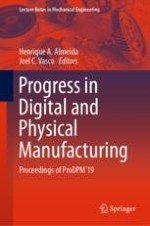This book contains selected papers from the First International Conference on Progress in Digital and Physical Manufacturing (ProDPM'19), organized by the School of Technology and Management (ESTG) of the Polytechnic Institute of Leiria (IPL). It presents a significant contribution to the current advances in digital and physical manufacturing issues as it contains topical research in this field. The book content is of interest to those working on digital and physical manufacturing, promoting better links between the academia and the industry. The conference papers cover a wide range of important topics like biomanufacturing, advanced rapid prototyping technologies, rapid tooling and manufacturing, micro-fabrication, 3D CAD and data acquisition, and collaborative design.
